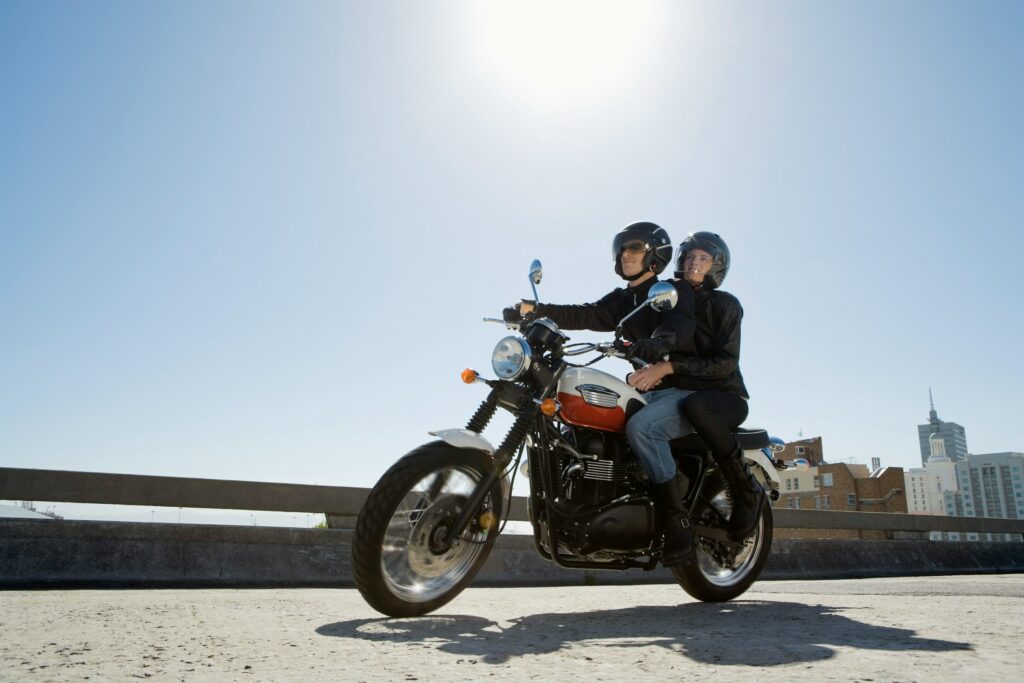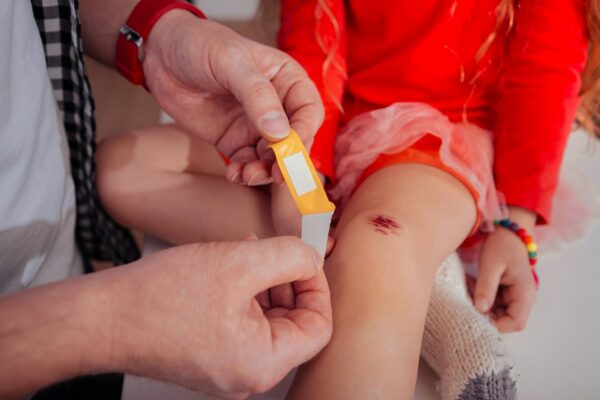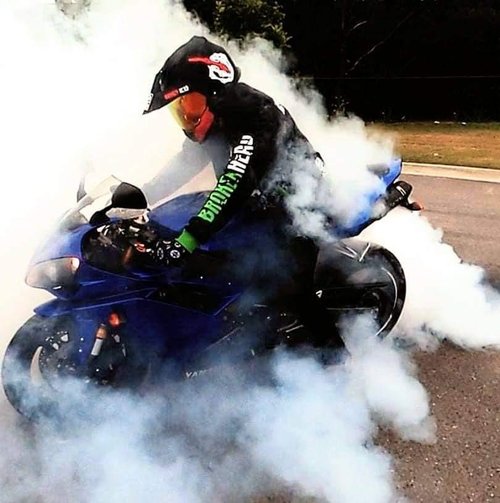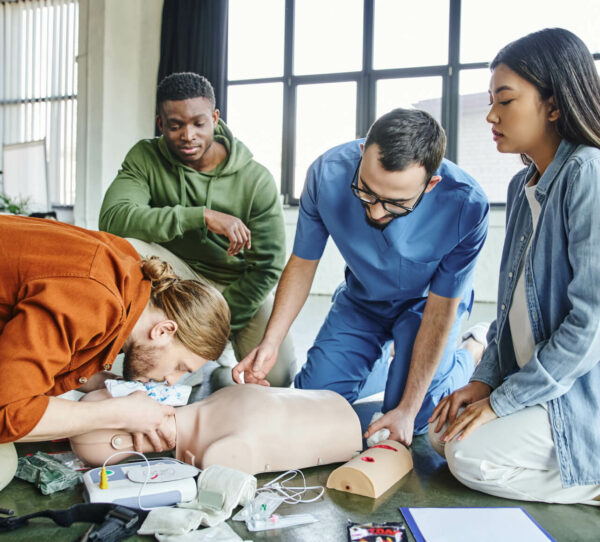Here are some cold, hard facts from 2021:
- 527 Motorcyclists were hospitalised as a result of a crash (1)
- 66 Motorcyclists were killed
Let’s talk about what you can learn or do on a first aid course, and which is the most appropriate for you.
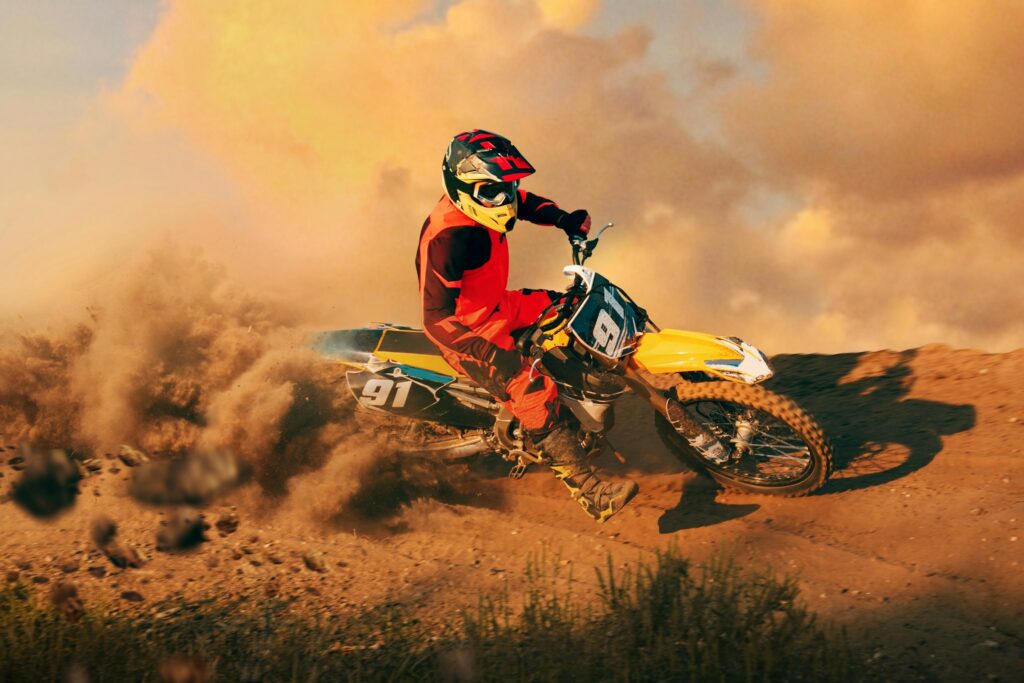
As a motorcyclist, you’re often close to the roadside gravel and only a few meters from another vehicle, a massive hazard to your health and safety. I’m sure most of you reading this have experienced yourself, or know somebody who has had an accident that has involving a motorcycle. Learning how to clean minor wounds and abrasions will save you in the long run from infection, but let’s talk about why you should learn how to deal with head trauma, a life-threatening haemorrhage or a spinal injury.
The thing about spinal injury is that traffic incidents are the leading cause of spinal injuries around the world (2). Timely and appropriate treatment with early recognition of the potential for this specific injury are necessities in preventing further injury/complications following an accident. Knowing how to manually immobilise a person’s spine is a niche skill that everybody considering going for a ride should train in.
It’s a fact that a life-threatening hemorrhage, such as an amputation, requires early intervention, and minutes can make a difference in patient outcomes (3). It’s easy enough to buy a tourniquet, but knowing when and how to use one is an essential piece of information.
Lastly, don’t be the person who believes that they’ll never need it. Prepare for the worst case, and keep yourself and your friends safe.
We recommend completing a Remote or Isolated Setting course; you’ll learn how to apply an arterial tourniquet properly and how to properly plan and mitigate likely health hazards that you may encounter on the open road when you’re far from help. This course is run to teach and refresh your skills on unique issues that you would encounter in the unfortunate event that something goes wrong outside of an hour’s reach of your nearest hospital. It focuses on planning, how to pack for remote conditions, what medical issues can arise in different environments and how to treat them.
If you’re planning a longer trip or an out-of-town rally, we suggest you look at the following details before you embark:
- What’s your comms plan? Will you have service and power to recharge your devices, or are you planning on looking into alternate methods?
- What is the weather conditions? Not only because the rain is uncomfortable to ride in, but because different terrains and seasons also influence medical conditions that can arise
- What kind of a first aid kit are you taking with you? Are the supplies in a serviceable condition or do they need replacing? Is this trip to a different type of area to last, and should you be changing what first aid equipment you’re taking with you?
- Where is the nearest tertiary help? Is an aeromedical evacuation service going to be your go to or will you be waiting for a road evacuation service?
References:
1 Queensland Government. (2022). Queensland Road Crash Weekly Report (p. Report 1250b).
2 Spinal cord injury. (2022). Retrieved 18 May 2022, from https://www.who.int/news-room/fact-sheets/detail/spinal-cord-injury
3 Rossaint, R., Bouillon, B., Cerny, V., Coats, T. J., Duranteau, J., Fernández-Mondéjar, E., Hunt, B. J., Komadina, R., Nardi, G., Neugebauer, E., Ozier, Y., Riddez, L., Schultz, A., Stahel, P. F., Vincent, J. L., Spahn, D. R., & Task Force for Advanced Bleeding Care in Trauma (2010). Management of bleeding following major trauma: an updated European guideline. Critical care (London, England), 14(2), R52. https://doi.org/10.1186/cc8943

